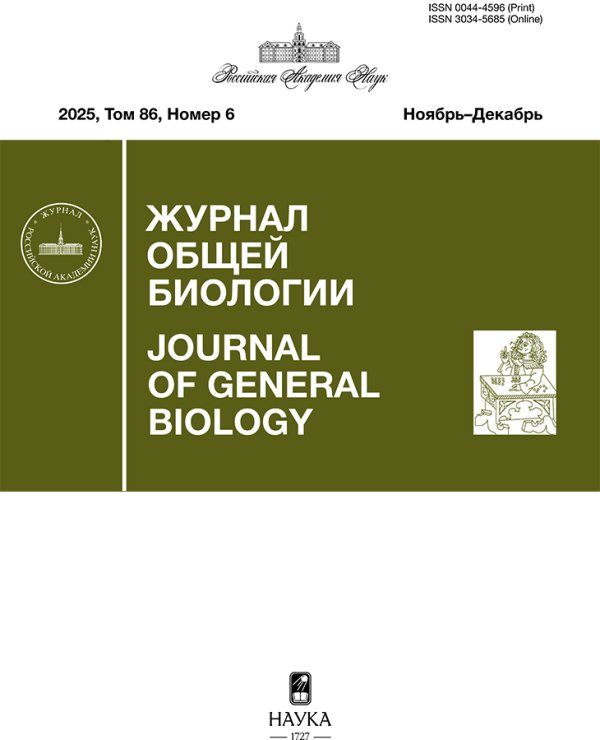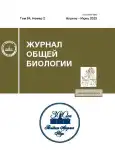Том 84, № 2 (2023)
Статьи
Роль человеческого сывороточного альбумина в профилактике и лечении болезни Альцгеймера
Аннотация
Болезнь Альцгеймера (БА) была и остается основной причиной развития деменции у возрастных пациентов. Данное нейродегенеративное заболевание характеризуется прогрессивным течением и относится к группе социально значимых. Существует несколько гипотез развития БА: тау-гипотеза, амилоидная гипотеза, холинергическая гипотеза, гипотезы окислительного стресса и воспаления. Отсутствие общепринятого представления об этиологии и патогенезе БА препятствует разработке новых эффективных способов ее лечения и профилактики. В клинической практике широко используются ингибиторы холинэстеразы, облегчающие симптомы заболевания, но не влияющие на его течение. В 2021 г. впервые был одобрен препарат для проведения патогенетической терапии БА (адуканумаб), способствующий снижению содержания β-амилоидного пептида (Аβ) в головном мозге пациентов. Другим перспективным подходом к терапии БА, направленным на выведение Аβ из центральной нервной системы пациента, является воздействие на человеческий сывороточный альбумин (ЧСА), который переносит 90% Аβ в сыворотке крови и 40–90% Аβ в цереброспинальной жидкости. В клинической практике уже был апробирован и показал свою эффективность плазмаферез с заменой собственного ЧСА на очищенный терапевтический препарат альбумина. Еще одним вариантом такого подхода является усиление взаимодействия ЧСА с Аβ посредством воздействия экзогенных и эндогенных лигандов ЧСА, таких как серотонин, ибупрофен и некоторые ненасыщенные жирные кислоты. Исследования in vivo подтверждают ассоциацию данной группы лигандов с патогенезом БА. Перечисленные вещества относятся к хорошо изученным естественным метаболитам или лекарственным препаратам, что существенно упрощает разработку новых методов терапии и профилактики БА с их использованием. В целом, новое направление научных исследований, посвященных изучению ЧСА в качестве переносчика и депо Аβ в крови и цереброспинальной жидкости, позволит расширить наши представления о метаболизме Аβ и его роли в патогенезе БА.
 83-97
83-97


Адаптивные реакции древнейших ископаемых организмов: возможные эволюционные причины возникновения социальности
Аннотация
Результаты изучения строматолитов показали направленный и необратимый характер их эволюции. Дальнейшее детальное изучение строения позволило выявить соподчиненность структур различных иерархических уровней и согласованность их изменения во времени, что указывает на наличие у макроскопического строматолитообразователя морфогенетических и адаптивных возможностей – свойств целостного организма. Это вступало в противоречие с существующими на тот момент представлениями о невозможности образования прокариотами организованных сообществ или многоклеточных организмов. Считалось, что для образования многоклеточных организмов и любых сообществ с развитой коммуникацией требуется высокая структурная сложность элементов. Бактерии рассматривались как не обладающие достаточной сложностью одиночные или колониальные организмы. Однако прямое наблюдение их скоплений выявило признаки высокоорганизованных сообществ, сопоставимых по своей целостности с организмами. Это заставляет по-иному подойти к природе возникновения сообществ и источникам их сложности. На основании единства наблюдаемых процессов, помимо самих цианобактерий, рассматриваются данные по другим группам бактерий, а также по модульным организмам и сообществам многоклеточных эукариот.
 98-113
98-113


Тринадцать лет мониторинга ценопопуляции Eritrichium caucasicum: стохастическая скорость роста в условиях репродуктивной неопределенности
Аннотация
Стадийную структуру ценопопуляции незабудочника кавказского Eritrichium caucasicum наблюдали на постоянных площадках в альпийском поясе Северо-Западного Кавказа ежегодно в течение 13 лет (2009–2021 гг.), накапливая данные типа “идентифицированные особи от неизвестных родителей”. Последнее обстоятельство предопределило то, что называется репродуктивной неопределенностью в терминологии матричных моделей динамики популяций с дискретной структурой – невозможность однозначно калибровать коэффициенты годичного пополнения, присущие группам генеративных растений и генеративных последнего цветения. В результате вместо годичных значений асимптотической скорости роста модель дает лишь определенные, изменяющиеся год от года диапазоны их значений, отвечающие данным, и это привносит не только технические сложности, но и делает неопределенным прогноз жизнеспособности на основе асимптотической скорости роста. Известный альтернативный подход состоит в оценке стохастической скорости роста λS, однако в литературе предлагались лишь искусственные модели случайности, участвующие в расчетах λS. Наша реалистичная модель случайности связана с вариациями погодных и микроклиматических условий местообитания и восстановлена по достаточно длинному (60 лет) временнóму ряду погодного показателя. Ее использование в расчетах λS методом Монте-Карло обеспечивает более надежную и точную оценку стохастической скорости роста.
 114-126
114-126


Оценка динамики флоры орхидных (Orchidaceae: Magnoliophyta) России на основании сравнения материалов, накопленных до 1951 г. и в 1961–2010 гг.
Аннотация
Динамика флор является перспективным направлением исследований в ботанике. Работы в этой области имеют практическое значение для диагностики сокращающихся видов, позволяют выявлять конкретные факторы, влияющие на численность растений, и в перспективе разрабатывать меры по сохранению биологического разнообразия in situ. В настоящей статье под динамикой понимается изменение числа местонахождений, т.е. количественные изменения флор. Рассмотрены количественные изменения в составе флоры, выявляемые при сравнении массива данных до 1951 г. и в 1961–2010 гг. Диагностированы виды со статистически значимым сокращением или ростом числа местонахождений, у части видов статистически значимые тенденции не выявляются. Динамика рассматривается как по России в целом, так и отдельно по крупным частям страны, причем случаи, когда у видов выявляется несогласованная динамика числа местонахождений в различных частях страны, редки. Рассматриваются перспективы дальнейших исследований в этой области, в том числе возможности применения разработанной методики к другим группам сосудистых растений России.
 127-143
127-143


Гербарии России: роль в изучении биоразнообразия страны, проблемы сохранения и рационального использования
Аннотация
Для сохранения биоразнообразия на Земле необходимо в кратчайшие сроки провести инвентаризацию всех форм жизни, и эта задача особенно актуальна для малоизученных территорий. Наземные и водные экосистемы России представляют собой самый большой массив естественных внетропических экосистем Евразии. Для решения задачи инвентаризации флоры и фауны особую значимость приобретают биологические коллекции; в целом ряде обзоров привлекается внимание научного и гражданского сообщества к проблеме сохранения и все более широкого применения коллекций. В данной статье исследуется роль гербариев в изучении биоразнообразия России на основе количественного анализа коллекций страны, степени их цифровизации и интеграции в глобальную мировую сеть биологических коллекций. Сделан вывод, что гербарный фонд России недостаточен по количеству образцов и неравномерно распределен по регионам, наименьшее количество образцов растений имеется для ряда регионов северо-востока России. Около половины всех российских гербариев не зарегистрированы в Index Herbariorum, соответственно, не интегрированы в мировую информационную систему по биоразнообразию. Здесь же освещается проблема сохранности гербарных коллекций, намечаются пути ее решения и перспективы использования гербариев в будущем. Авторы полагают, что первоочередными мерами должны быть: 1) формирование нормативно-правовой базы по работе с биоколлекциями, которая, в частности, позволит признать гербарные коллекции объектами культурного и научного наследия, обеспечить специальное финансирование коллекций; 2) введение в практику централизованного учета российских гербариев и включение их в международную базу данных; 3) запрет на списание гербарных коллекций организациями; 4) увеличение темпов цифровизации ботанических коллекций; 5) комплектование гербариев кадровыми исследователями; введение в профильных вузах курса по гербарному делу; 6) выделение для гербариев отдельных помещений, оборудованных специализированными шкафами и вентиляцией.
 144-154
144-154


Пространственная организация населения птиц Восточного Алтая в первой половине лета
Аннотация
Проанализированы результаты маршрутных учетов птиц, усредненные за первую половину лета (16.05–15.07), на территории Восточного Алтая. Учеты проведены в 1996, 2000–2002, 2007, 2008 и 2013 гг. На основе кластерного анализа составлена иерархическая классификация населения птиц, выявлена структура и основные факторы среды, определяющие территориальную неоднородность орнитокомплексов. Показано, что их изменчивость в Восточно-Алтайской провинции и Алтайской физико-географической горной области в целом близка по своей структуре. Пространственно-типологическая структура населения птиц Восточного Алтая своей конфигурацией близка к полумесяцу.
 155-160
155-160












